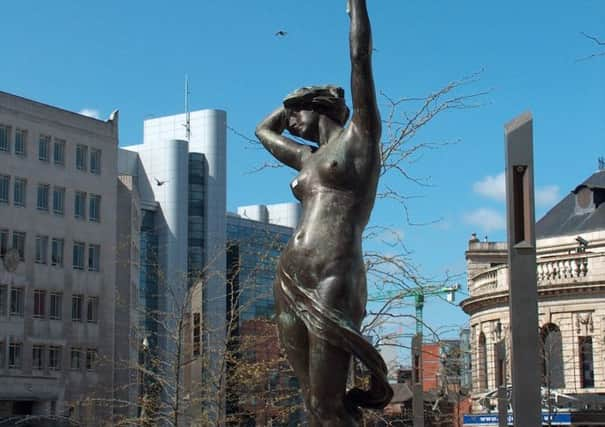Artist whose new sculpture shocked Victorian audience


Known for his elaborate public sculptures, Alfred Drury’s work can be seen in public squares across the UK including in London, Sheffield and Leeds.
“Leeds has probably got the biggest awareness of Alfred Drury, just in terms of him being in the background all over the city,” says Ben Thomas, curator of Studio 3 Gallery at the University of Kent and curator of Alfred Drury and the New Sculpture at the Stanley and Audrey Burton Gallery, Leeds.
Advertisement
Hide AdAdvertisement
Hide AdHis series of eight bronze lamp bearers around Leeds City Square is one of the first things that visitors to the city see when they leave the train station. They were commissioned by the Lord Mayor of Leeds, Colonel Thomas Walter Harding, in 1897 to mark Leeds’s new status as a city.
The statues were arranged in a circle around the square in line with the points of a compass each representing Morn or Eve. “They are fabulous,” says Benedict Read, Senior Fellow in Fine Art at the University of Leeds and contributor to the exhibition’s catalogue. “In different lights they dazzle and the modelling of them as mature women is quite exceptional.”
When the sculptures were first unveiled in 1899, there was outcry in the pages of this newspaper as citizens voiced their concerns about the frank nudity of the statues.
“The Yorkshire Post ran a few letters at the time which disapproved of the nudity,” says Thomas. “They’re kind of sexy, and I guess you don’t really expect that from Victorian sculpture,” he says.
Advertisement
Hide AdAdvertisement
Hide Ad“The paper ended up running a long article about how the sculptures were pure in spirit and how the morality of Leeds wouldn’t be affected in any way by these works.”
Drury, along with George Frampton and William Thornycroft, became associated with the New Sculpture movement in Britain. “There was a feeling in the 1890s that British sculpture until then had been very Greek in its inspiration – very classical in its style,” says Thomas. “Nudes would have been idealised, but with Drury’s figures you can see that they’re based on real bodies. This was quite a new thing back then – this is why you get the term New Sculpture. It was certainly a novelty at the time – it was quite shocking to a Victorian audience,” he says.
But by the mid-1990s Leeds City Square was refurbished, and initial plans saw fit to remove Drury’s statues from the square. “People saw them as worthless, as useless, that they had no meaning – it’s still a strong agenda that Victorian public art is rubbish,” says Read. “There was a strong party in favour of getting rid of the statues, but a few people stuck up for them,” he says.
Read joined Leeds City Councillor Elizabeth Nash in a campaign to keep the statues. Leeds city architect John Thorp planned the new arrangement for the square and found a way to keep the statues and present them in a more meaningful way.
Advertisement
Hide AdAdvertisement
Hide AdAlfred Drury and the New Sculpture is on display at the Stanley and Audrey Burton Gallery, Leeds, until April 12.
Important public artist and royal academician
Alfred Drury (1856-1944), was born in London and was a key figure in the British New Sculpture movement of the 19th century. Drury produced a number of important public sculptures across the UK including: eight nude female statues representing Eve and Morn and a carving of scientist Joseph Priestley on Leeds City Square; a portrait of Edward VII on Sheffield’s Fitzalan Square; and a large statue of Queen Victoria on the corner of Morley Street and Little Horton Lane, Bradford. He was elected an Associate of the Royal Academy of Arts in 1900 and a full Academician in 1913.